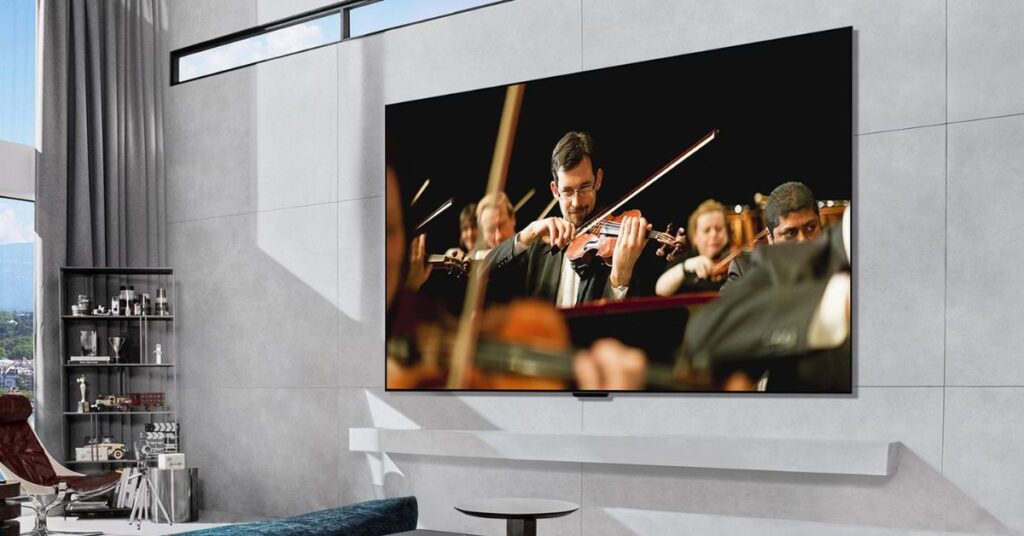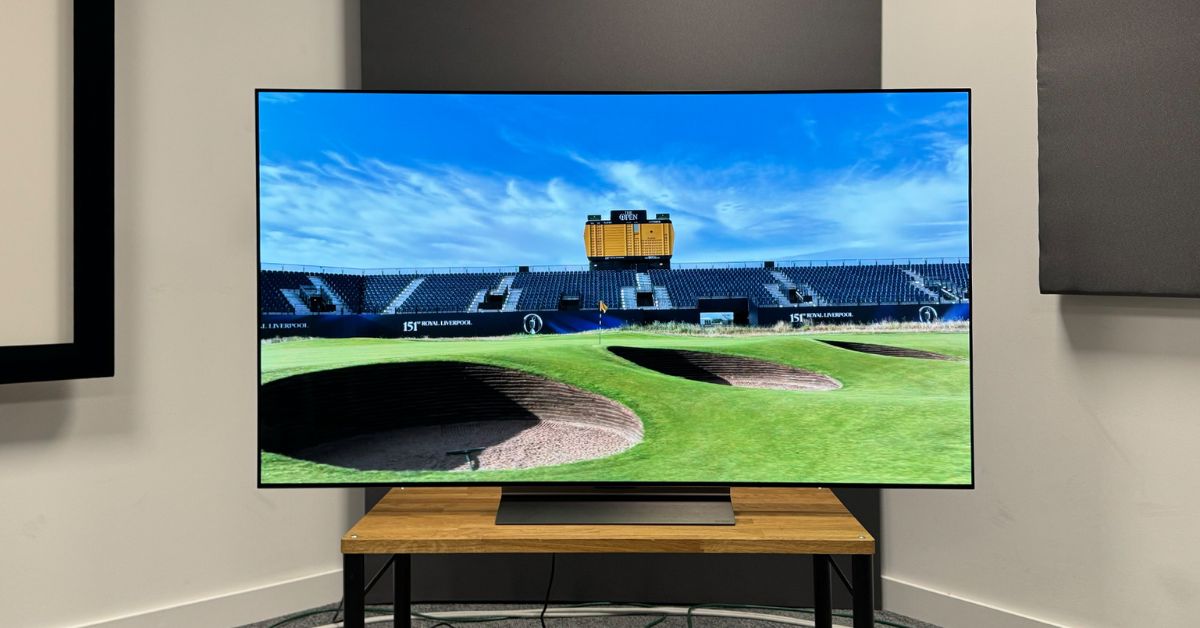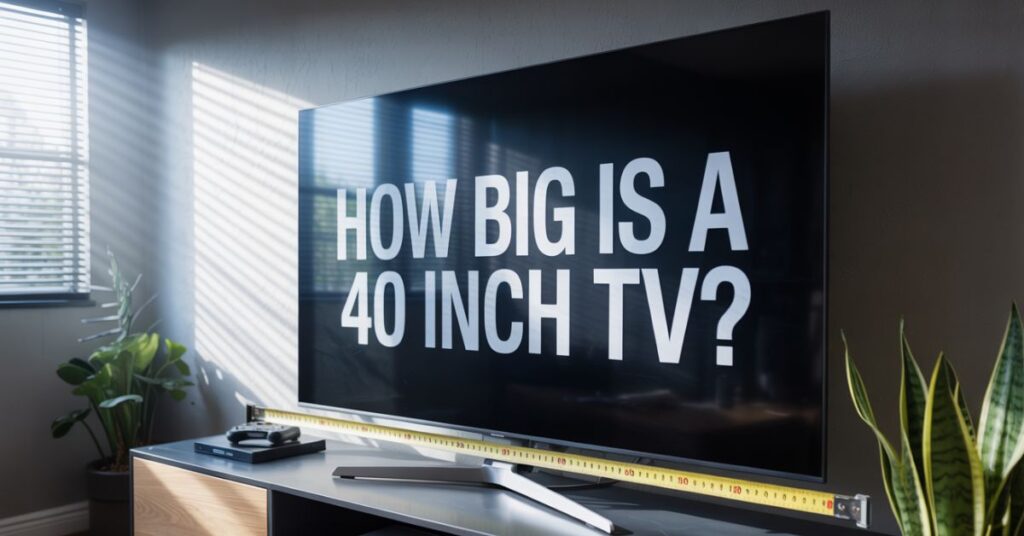Planning your entertainment setup? Understanding the exact 65-inch TV width prevents costly mistakes and ensures perfect room harmony. Most buyers underestimate how much space these impressive screens actually consume.
65-Inch TV Dimensions Interactive dimensions calculator
Use the preset for 65″ or enter your own diagonal and aspect ratio. Outputs width & height in inches, centimeters, millimetres, and feet.
Dimensions
| Diagonal | 65 in | |
|---|---|---|
| Width | — | |
| Height | — | |
| Aspect | 16:9 |
Visual (approximate)
The 65-Inch Reality Check
Television manufacturers measure screens diagonally, not by width. This creates confusion when planning your space. A 65-inch TV refers to the diagonal screen measurement from corner to corner.
The actual 65-inch TV dimensions include the screen plus bezels and frame. Think of it like buying a picture frame – you need space for both the artwork and the border.
However, modern TVs feature ultra-thin bezels. This means the screen takes up nearly the entire front surface. Your 65-inch TV width will be remarkably close to the advertised diagonal measurement.
Exact 65-Inch TV Width Measurements

Standard 65-Inch TV Width Across Major Brands
Most 65-inch TVs measure approximately 56.7 to 57.8 inches wide. This slight variation depends on bezel thickness and design choices.
Width measurements breakdown:
- Inches: 56.7″ – 57.8″
- Centimeters: 144 cm – 147 cm
- Millimeters: 1440 mm – 1470 mm
- Feet: 4.7 – 4.8 feet
Premium models often feature thinner bezels. Budget TVs might add an extra half-inch due to thicker frames. Always check specific model specifications before purchasing.
Brand-Specific 65-Inch TV Dimensions Comparison
Samsung 65-inch models typically measure 57.1 inches wide. Their QLED series maintains consistent dimensions across different price points.
LG 65-inch TVs range from 56.9 to 57.3 inches wide. OLED models tend toward the narrower end due to premium construction.
Sony 65-inch dimensions usually hit 57.2 inches wide. Their Bravia series adds minimal bezel width while maximizing screen real estate.
TCL and budget brands often measure 57.5 to 57.8 inches wide. The extra width accommodates more affordable manufacturing processes.
How Much Space Is Needed for a 65 Inch TV?
Optimal Viewing Distance Calculations
The 65-inch TV space requirements extend beyond just the unit width. Comfortable viewing demands proper distance planning.
Follow the 1.5x to 2.5x rule: multiply your screen width by 1.5 to 2.5 for ideal viewing distance. With a 57-inch wide screen, you need 8.5 to 12 feet of viewing distance.
Closer seating works for 4K content. The higher resolution eliminates pixelation concerns. However, sitting too close causes eye strain and neck discomfort.
Clearance Requirements Around Your 65-Inch TV
Side clearance should provide at least 6 inches on each side. This allows proper ventilation and creates visual breathing room.
Top clearance needs 4-6 inches minimum. Heat rises from internal components, requiring adequate airflow. Enclosed cabinets demand even more space.
Bottom clearance depends on your setup. Wall-mounted units need minimal bottom space. TV stands require enough clearance for cable management and cleaning access.
65-Inch vs. 55-Inch TV / The Width Difference
How Much Wider Is a 65 TV Than a 55?
A 55-inch TV measures approximately 48.5 inches wide. This makes a 65-inch TV roughly 8-9 inches wider than its smaller sibling.
That extra width significantly impacts your room’s visual balance. It’s equivalent to adding a large picture frame to your wall. The increased presence can overwhelm smaller spaces.
Consider this: 9 additional inches means your TV extends 4.5 inches further on each side. In tight quaters, this expansion might eliminate flanking decorations or force furniture rearrangement.
Upgrading Considerations: Space Impact Analysis
Measure your current 55-inch TV setup carefully. Mark where the 65-inch TV width would extend using painter’s tape. Live with these boundaries for a week.
Pay attention to sightlines from different seating positions. The wider screen might block windows, artwork, or architectural features you hadn’t considered.
Traffic flow patterns matter too. Will the expanded width create navigation issues around furniture? These practical concerns outweigh screen size benefits.
TV Stand Width Requirements for 65-Inch TVs
How Wide Should a TV Stand Be for a 65 Inch TV?
Your TV stand should measure 65-70 inches wide for optimal stability and aesthetics. This provides 4-7 inches of overhang on each side.
Narrower stands create top-heavy appearances and safety risks. Children or pets might accidentally tip an improperly supported TV. The investment in proper stand width pays safety dividends.
Wider stands offer storage benefits and visual anchoring. Consider 75-80 inch consoles for large rooms. The extra width accommodates soundbars, gaming consoles, and decorative elements.
Popular TV Stand Options for 65-Inch Models
IKEA HEMNES measures 72 inches wide and supports up to 110 pounds. Its traditional styling complements most décor schemes while providing ample storage.
Walker Edison Farmhouse Console spans 70 inches with rustic charm. The barn door design conceals electronics while maintaining proper 65-inch TV dimensions support.
Prepac Altus Plus offers 72 inches of contemporary style. Floating installation creates clean lines and maximizes floor space underneath.
Height and Depth

65-Inch TV Height Measurements
65-inch TV height typically ranges from 32 to 33.5 inches without a stand. Add 2-4 inches for integrated stands, depending on design.
Wall mounting eliminates stand height but requires careful positioning. The TV’s center should align with eye level when seated. For most people, this places the screen bottom 24-30 inches from the floor.
Consider ceiling height too. 65-inch TVs with stands might feel overwhelming in rooms under 8 feet tall. The proportional relationship affects perceived room size.
Depth Requirements and Projections
Modern 65-inch TVs measure just 2-4 inches deep. OLED models achieve ultra-slim profiles under 2 inches. LED and QLED variants typically reach 3-4 inches thick.
Wall mounts add 1-6 inches depending on type. Fixed mounts minimize projection while tilting/swiveling options increase depth. Plan for cable management space behind wall-mounted units.
TV stands extend 12-20 inches from the wall. Factor this depth into furniture arrangement. Ensure adequate walking space behind seating areas.
Real-World Setup Examples
Small Living Room Challenges
65-inch TV width in compact spaces requires creative solutions. Corner mounting angles the screen toward seating while minimizing wall space consumption.
Ultra-slim wall mounts keep the TV close to the wall. This maximizes floor space while maintaining proper viewing distances. Choose mounts rated for your TV’s weight.
Consider furniture scale carefully. Oversized TVs can dwarf small rooms, creating claustrophobic feelings. Sometimes a 55-inch model provides better proportional harmony.
Open Floor Plan Considerations
Large spaces welcome 65-inch TV dimensions without constraint. The challenge shifts to creating intimate viewing areas within expansive rooms.
Position seating to define TV zones. Area rugs, coffee tables, and strategic lighting create cozy boundaries. This prevents the TV from floating disconnected in vast spaces.
Multiple viewing angles become important. Swivel mounts help optimize sightlines from kitchen islands, dining tables, or secondary seating areas.
Shopping Guide
Your Pre-Purchase Checklist
Measure your intended TV wall space precisely. Include windows, outlets, and architectural features that might interfere with placement.
Check doorway widths throughout your home. 65-inch TVs in boxes often exceed 60 inches wide. Narrow hallways or doorframes might prevent delivery to upper floors.
Verify ceiling heights and stairwell clearances. Delivery teams need maneuvering space to navigate turns and elevations safely.
Document existing furniture dimensions. Your current TV stand might not accommodate the increased 65-inch TV width properly.
Questions to Ask Retailers
Confirm exact 65-inch TV dimensions including bezels and stands. Specifications sometimes list screen-only measurements, excluding frames.
Inquire about return policies for sizing issues. Some retailers charge restocking fees or exclude TVs from standard return windows.
Ask about white-glove delivery services. Professional installation teams handle measurement verification and proper mounting for complex setups.
FAQ’s
What is the width of a 65 inch TV?
65-inch TVs measure 56.7 to 57.8 inches wide depending on the brand and bezel design. Samsung models typically measure 57.1 inches while LG variants range from 56.9 to 57.3 inches wide.
How much space is needed for a 65 inch TV?
Plan for 8.5 to 12 feet of viewing distance from your seating area. Add 6 inches of side clearance and 4-6 inches of top clearance around the unit for proper ventilation and aesthetics.
How much wider is a 65 TV than a 55?
A 65-inch TV is approximately 8-9 inches wider than a 55-inch model. This translates to 4.5 inches of additional extension on each side, significantly impacting room layout and visual balance.
How wide should a TV stand be for a 65 inch TV?
Your TV stand should measure 65-70 inches wide minimum for proper support and visual proportion. Stands up to 75-80 inches wide work well in larger rooms and provide additional storage space.

Welcome to Swiftnis.com! I manage this site to provide accurate and easy-to-understand measurement guides. My goal is to make measurements simple for everyone. Whether you need Conversions, Tools, or Tips, I’m here to help. Enjoy exploring and measuring with confidence!
















